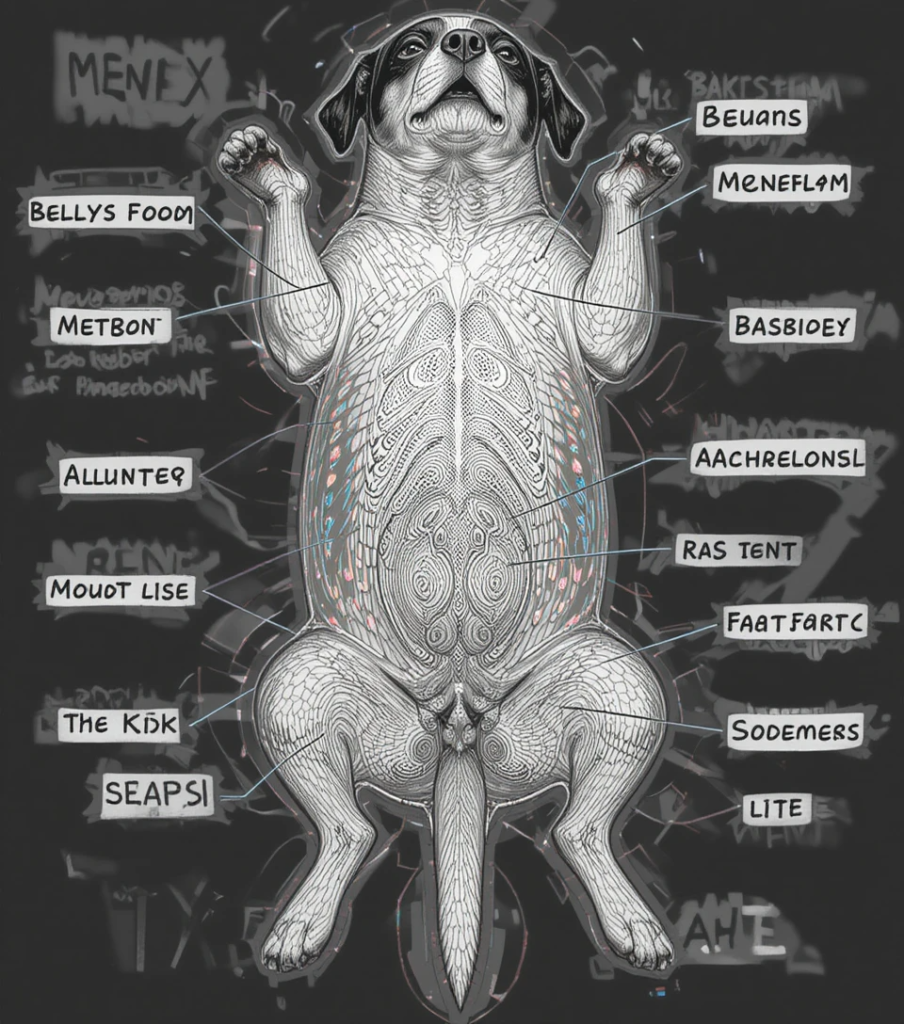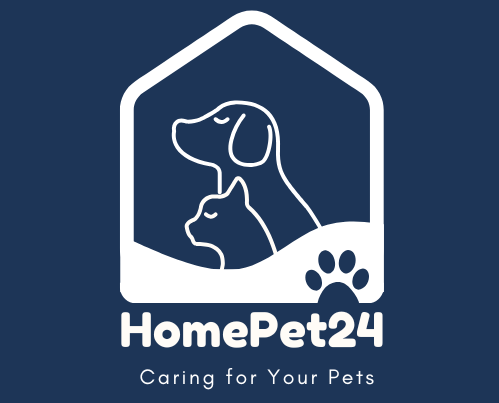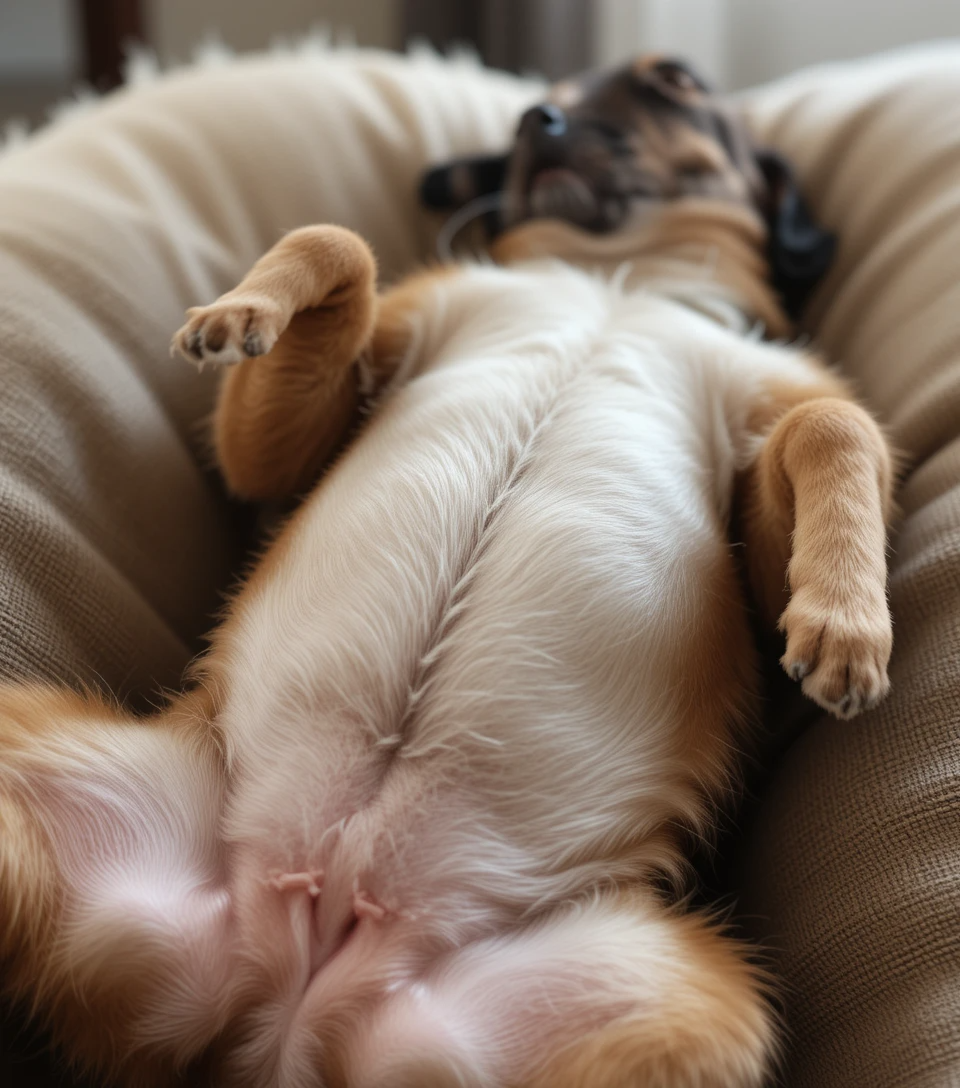Introduction
Ever scratched your dog’s belly and wondered—do dogs even have belly buttons? It’s a surprisingly common question, and the answer might both surprise and fascinate you. Just like humans, dogs are mammals, and that means they have belly buttons, too—although they’re a bit harder to spot. In this article, we’ll uncover the intriguing truth behind your dog’s navel, explore how it forms, and reveal some fun, vet-approved facts you’ve probably never heard before.
What Is a Belly Button and Why Do Mammals Have One?
A belly button, also known as a navel or umbilicus, is the small scar left behind after the umbilical cord is cut post-birth. In mammals, the umbilical cord connects the developing fetus to the placenta, delivering oxygen and nutrients until birth. Once the puppy is born, the mother chews off the umbilical cord, leaving a tiny scar—this is the belly button.
So yes, all mammals—including dogs—have belly buttons.
Do Dogs Have Belly Buttons?
Yes, dogs do have belly buttons! Just like humans and other mammals, a dog’s belly button marks the spot where the umbilical cord was attached during its time in the womb. However, it’s much less prominent in dogs than in humans. You won’t see a deep indentation like ours—instead, it appears as a small, flat scar on the abdomen.
Where Is a Dog’s Belly Button Located?

A dog’s belly button is located on the underside of the abdomen, typically just below the rib cage and between the two rows of nipples. It usually appears as a small wrinkle or a subtle circular scar.
To find it:
- Gently rub your dog’s belly when they’re lying on their back.
- Look for a small, flat, or slightly raised spot near the centerline.
It may not be easy to notice—especially in long-haired breeds—but it’s definitely there.
Why Don’t We Notice It Like in Humans?
Unlike humans, dogs don’t have a protruding or recessed navel. Instead, their umbilical scar heals flat, blending into the fur and skin. Since mother dogs chew off the umbilical cord instead of it being clamped and cut like in human births, the scar left behind is much more discreet.
Additionally:
- Fur covers the belly button.
- It’s flush with the skin, not indented or “outie.”
- The healing process is faster and cleaner in most puppies.
Can a Dog’s Belly Button Have Health Issues?
Yes, though rare, there are some health concerns related to the belly button area:
1. Umbilical Hernia
A common condition in puppies, where part of the intestine pushes through the abdominal wall at the umbilicus. You may notice a soft bulge near the belly button.
- Small hernias often resolve on their own.
- Larger ones may need surgical repair.
2. Infections or Swelling
If you notice redness, discharge, or swelling around your dog’s navel, consult a vet immediately. These could indicate an infection or a complication from an unhealed scar.
Fun Facts About Belly Buttons in Dogs
- Dogs are born in litters, so belly buttons are part of each birth experience.
- Some people call it a “hidden scar” rather than a button.
- Short-haired dogs make it easier to spot the belly button.
- Not all animals have belly buttons—only placental mammals do.
What Vets Say About Dog Belly Buttons

Veterinarians confirm that belly buttons are normal in dogs and pose no cause for concern—unless you spot unusual swelling or signs of a hernia. Routine check-ups usually cover any visible issues, and hernias are generally easy to treat.
Dr. Sarah Mason, DVM, notes:
“Dog owners shouldn’t worry about not seeing the belly button. It’s there, just much subtler than in people.”
How to Check Your Dog’s Belly Button
If you’re curious or just want peace of mind:
- Lay your dog on its back in a comfortable setting.
- Feel for a small, flat spot under the rib cage, between the nipples.
- Look closely if your dog has short fur—or gently part the fur in long-haired breeds.
- Watch for anything unusual, like lumps or swelling.
If anything feels off, a vet visit is the best move.
Conclusion
So, do dogs have belly buttons? Absolutely! It might not be as obvious as ours, but that little scar is a shared trait among all mammals, quietly reminding us of how life begins. Whether you’re a dog owner or just a curious animal lover, knowing more about your furry friend’s body is always a good thing—and who knew a simple belly button could be so fascinating?
❓10 FAQs About Dog Belly Buttons
- Do all dogs have belly buttons?
Yes, all dogs have belly buttons as they are mammals born with umbilical cords. - Where is the belly button on a dog?
It’s located on the dog’s underside, between the rib cage and the start of the abdomen. - What does a dog’s belly button look like?
It appears as a small, flat scar—usually barely noticeable. - Can dogs have “outie” belly buttons?
No, if it protrudes, it’s likely an umbilical hernia and should be checked by a vet. - Why can’t I find my dog’s belly button?
It may be hidden under fur or too subtle to notice without close inspection. - Do belly buttons in dogs ever cause problems?
Rarely—umbilical hernias or infections can occur but are typically treatable. - Is it normal for a puppy to have a lump near the belly button?
It could be a hernia. Consult your vet to be safe. - How do vets treat umbilical hernias in dogs?
Small ones may heal on their own; larger hernias often require surgery. - Can I clean my dog’s belly button?
Normally it doesn’t require cleaning. If you notice dirt or odor, gently wipe with a damp cloth and consult a vet if needed. - Do other animals have belly buttons like dogs?
Only placental mammals have belly buttons—so animals like cats, horses, and humans share this feature.

